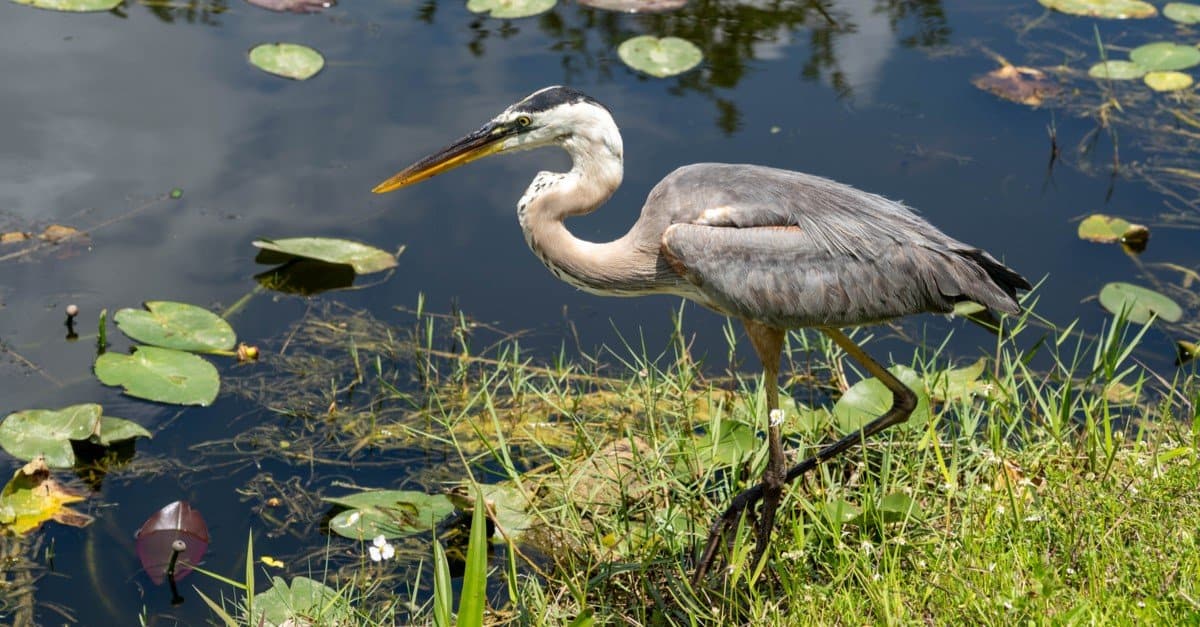Welcome to Facts Vibes! Today, we’re diving into the fascinating world of the great blue heron. Get ready to be captivated by some fun facts about this majestic bird as we uncover the remarkable secrets of its behavior, habitat, and unique characteristics.
The Fascinating World of Great Blue Herons: Fun Facts You Didn’t Know
The Fascinating World of Great Blue Herons: Fun Facts You Didn’t Know
Great Blue Herons are majestic birds that can be found in wetlands, marshes, and along the shorelines of North America. These birds are known for their striking blue-gray plumage, long legs, and impressive wingspan. Here are some fun facts about these captivating creatures that you may not have known:
- Great Blue Herons are expert hunters, known for their patience and precision when it comes to catching fish. They can stand perfectly still for long periods of time, waiting for the perfect moment to strike.
- Despite their large size, Great Blue Herons are skilled at navigating through dense vegetation and can even walk on floating vegetation while hunting for food.
- These birds are known for their unique nesting behaviors. They build large stick nests high in trees, often in colonies with other herons. The male and female work together to build the nest and take turns incubating the eggs.
- Great Blue Herons are excellent fliers, capable of reaching speeds of 20-30 miles per hour. Their graceful flight patterns and slow wingbeats add to their overall allure.
- While they are primarily solitary hunters, Great Blue Herons will come together in groups during the breeding season, engaging in elaborate courtship displays and vocalizations.
Learning about the fascinating world of Great Blue Herons provides a deeper appreciation for these remarkable birds and their important role in our ecosystem. Whether they are gracefully soaring overhead or patiently stalking their prey in the shallows, observing these magnificent creatures is always a rewarding experience.
Most popular facts
The great blue heron is the largest and most widespread heron species in North America.
The great blue heron is the largest and most widespread heron species in North America.
They can stand over 4 feet tall with a wingspan of 6 feet.
They can stand over 4 feet tall with a wingspan of 6 feet.
These birds are expert fishers and can be seen wading in shallow waters to catch their prey.
Heron birds are expert fishers and can be seen wading in shallow waters to catch their prey.
Great blue herons have specialized feathers on their chest that continually grow and fray, creating a powder that they use for preening and cleaning.
Great blue herons have specialized feathers on their chest that continually grow and fray, creating a powder that they use for preening and cleaning.
They are known for their distinctive call, which is a loud, harsh croak.
They are known for their distinctive call, which is a loud, harsh croak.
Great blue herons have intricate courtship displays, including bill snapping and neck stretching.
Great blue herons have intricate courtship displays, including bill snapping and neck stretching.
This species is adaptable and can be found in a variety of habitats, from saltwater shores to freshwater marshes.
This species is adaptable and can be found in a variety of habitats, from saltwater shores to freshwater marshes.
The National Audubon Society considers the great blue heron a species of least concern in terms of conservation status.
The National Audubon Society considers the great blue heron a species of least concern in terms of conservation status.
Great blue herons are colonial nesters, often nesting in large groups known as rookeries.
Great blue herons are colonial nesters, often nesting in large groups known as rookeries.
They have excellent vision, allowing them to spot prey from a distance while hunting.
Their excellent vision allows them to spot prey from a distance while hunting.
These birds primarily feed on fish, but they also consume amphibians, insects, and other small animals.
The birds primarily feed on fish, but they also consume amphibians, insects, and other small animals.
Great blue herons have been observed using tools, such as baiting fish with bread or insects to attract prey.
Great blue herons have been observed using tools such as baiting fish with bread or insects to attract prey.
Their nesting platform can be as high as 100 feet off the ground, and they return to the same nest each year.
Their nesting platform can be as high as 100 feet off the ground, and they return to the same nest each year.
The oldest recorded great blue heron in the wild lived to be at least 24 years old.
The oldest recorded great blue heron in the wild lived to be at least 24 years old.
Great blue herons have a slow and graceful flight, often with their necks tucked in an S-shaped curve.
Great blue herons have a slow and graceful flight, often with their necks tucked in an S-shaped curve.
In conclusion, the great blue heron is truly a fascinating bird, imbued with remarkable characteristics and behaviors. Its ability to adapt to various environments and its important role in ecosystems highlight the importance of preserving these majestic creatures. Understanding the intriguing facts about the great blue heron not only enriches our knowledge but also emphasizes the significance of conservation efforts to protect its habitat and ensure its continued presence in the natural world.
